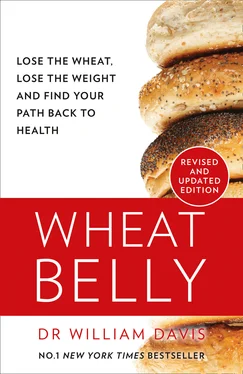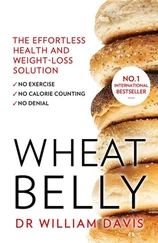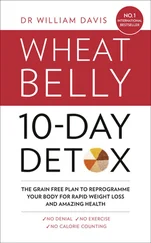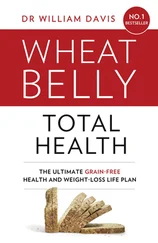In fact, the degree of processing, from a blood sugar standpoint, makes little difference: Wheat is wheat, with various forms of processing or lack of processing, simple or complex, high-fiber or low-fiber, organic or non-organic, all generating similarly high blood sugars. Just as “boys will be boys,” amylopectin A will be amylopectin A. In healthy, slender volunteers, two medium slices of whole wheat bread increase blood sugar by 30 mg/dl (from 93 to 123 mg/dl), no different from white bread. 6In people with diabetes, both white and whole grain bread increase blood sugar 70 to 120 mg/dl over starting levels. 7
One consistent observation, also made in the original University of Toronto study as well as in subsequent efforts, is that pasta has a lower two-hour GI, with whole wheat spaghetti showing a GI of 42 compared to white flour spaghetti’s GI of 50. Pasta stands apart from other wheat products, likely due, in part, to the compression of the wheat flour that occurs during the extruding process, slowing digestion by amylase. (Rolled fresh pasta, such as fettuccine, has similar glycemic properties to extruded pastas.) Pastas are also usually made from Triticum durum rather than aestivum , putting them genetically closer to emmer. But even the favorable GI rating of pasta is misleading, since it is only a two-hour observation and pasta has the curious ability to generate high blood sugars for four to six hours after consumption, sending blood sugars up by 100 mg/dl for sustained periods in people with diabetes. 8, 9
These irksome facts have not been lost on agricultural and food scientists, who have been trying, via genetic manipulation, to increase the content of so-called resistant starch (starch that does not get fully digested) and reduce the amount of amylopectin. Amylose is the most common resistant starch, increased to as much as 40 to 70 percent by weight in some purposefully hybridized varieties of wheat. 10
Wheat products therefore elevate blood sugar levels more than virtually any other carbohydrate, from beans to candy bars. This has important implications for body weight, since glucose is unavoidably accompanied by insulin, the hormone that allows entry of glucose into the cells of the body, converting glucose to fat. The higher the blood glucose after consumption of food, the greater the insulin level, the more fat is deposited. This is why, say, eating a three-egg omelet that triggers no increase in glucose does not add to body fat, while two slices of whole wheat bread increases blood glucose to high levels, triggering insulin and growth of fat, particularly abdominal or deep visceral fat.
There’s even more to wheat’s curious glucose behavior. The amylopectin A–induced surge in glucose and insulin following wheat consumption is a 120-minute-long phenomenon that produces the “high” at the glucose peak, followed by the “low” of the inevitable glucose drop. The surge and drop creates a two-hour roller coaster ride of satiety and hunger that repeats itself throughout the day. The glucose “low” is responsible for stomach growling at 9:00 a.m. that necessitates a snack, just two hours after a bowl of wheat cereal or an English muffin breakfast, followed by 11:00 a.m. prelunch cravings, as well as the mental fog, fatigue, and shakiness of the hypoglycemic glucose nadir.
Trigger high blood sugars repeatedly and/or over sustained periods, and more fat accumulation results. The consequences of glucose-insulin-fat deposition are especially visible in the abdomen—resulting in, yes, wheat belly. The bigger your wheat belly, the poorer your response to insulin, since the deep visceral fat of the wheat belly is associated with poor responsiveness, or “resistance,” to insulin, demanding higher and higher insulin levels, a situation that cultivates diabetes. Moreover, the bigger the wheat belly in males, the more testosterone is converted to estrogen by fat tissue, and the larger the breasts. In susceptible females, testosterone is increased, accompanied by facial hair and infertility. The bigger your wheat belly, the more inflammatory responses that are triggered: heart disease, cancer, and dementia.
Because of wheat’s morphine-like effect (discussed in the next chapter) and the glucose-insulin cycle that wheat amylopectin A generates, wheat is, in effect, an appetite stimulant. Accordingly, people who eliminate wheat from their diet consume far fewer calories, something I will discuss later in the book.
If glucose-insulin-fat provocation from wheat consumption is a major phenomenon underlying weight gain, then elimination of wheat from the diet should reverse the phenomenon. And that is exactly what happens.
For years, wheat-related weight loss has been observed in patients with celiac disease, who must eliminate all foods containing gluten from their diets to halt an immune response gone awry, which in celiac patients essentially destroys the small intestine. As it happens, wheat-free, gluten-free diets are also amylopectin A–free, especially if other grains are eliminated.
However, the weight loss effects of wheat elimination are not immediately clear from clinical studies. Many celiac sufferers are diagnosed after years of suffering and begin the diet change in a severely malnourished state due to prolonged diarrhea and impaired nutrient absorption. Underweight, malnourished celiac sufferers may actually gain weight with wheat removal thanks to improved digestive function.
Wheat Belly Success Story: Kathleen

“Just came back from my annual physical, where I managed to shock the bejeezus out of my doctor, which is not an easy thing to do.
“She looked at my vitals and last year’s report, looked at me, and said in complete surprise, ‘What have you been doing?! What happened to last year’s issues?’ Meaning dangerously low blood pressure, heart palpitations, GERD (gastroesophageal reflux disease), Barrett’s esophagitis (a nasty little swallowing disorder), leg edema, unstoppable weight gain/BMI in the obese range, chronic fatigue and brain fog, and zero libido to be the frosting on that little cake of unpleasantness.
“All of those issues have completely resolved, BMI normal and healthy, and my blood pressure has actually increased to normal. I’ve always had very low blood pressure, which caused fainting spells, edema, and heart palpitations. I’ve actually passed out right in front of her during exams in the past. Haven’t had any of those issues since starting this way of eating eleven months ago.
“The ‘before’ was taken during a time when I was doing CrossFit three times a week, spin classes three times a week, and riding my bicycle hundreds of miles a week (yes, every week) to train for hundred-mile charity bike rides. All the while eating low-fat and ‘healthy’ whole grains and barely losing any weight. Would you just look at that butt! My doctor told a frustrated me that I just needed to exercise more and it would come off. I asked her what more could I do, wrestle a bear?!
“The ‘after’ is me eighty pounds lighter after eighteen months grain-free. The cardiac issues are gone. And recovering from a broken ankle and being confined to a walking boot for almost two months. The muscles that I’ve worked so hard to build for years are finally showing. I’m fifty-three-and-a-half and am here to show that it’s never too late to get your health back and you’re never too old to start living! Soldier on, Wheat Belliers, and let your inner jock come out to play!”
But if we look only at overweight people who are not severely malnourished at the time of diagnosis who remove wheat from their diet, it becomes clear that this enables them to lose a substantial amount of weight. A Mayo Clinic/University of Iowa study of 215 obese celiac patients showed 27.5 pounds of weight loss in the first six months of a wheat-free diet. 11In another study, wheat elimination slashed the number of people classified as obese (body mass index, or BMI, 30 or greater) in half within a year. 12Oddly, investigators performing these studies usually attribute the weight loss of wheat- and gluten-free diets to lack of food variety. (Food variety, incidentally, can still be quite wide and wonderful after wheat is eliminated, as I will discuss.)
Читать дальше













